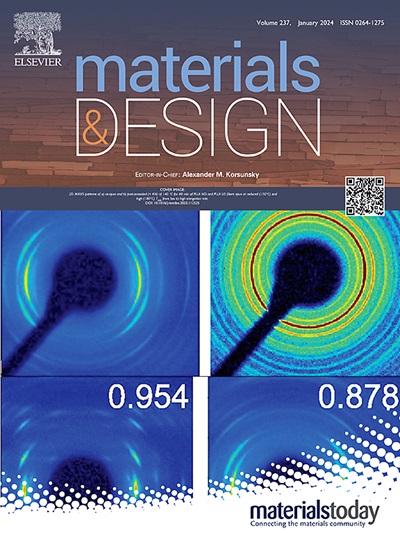An additive manufacturing approach for fabrication of agarose hydrogel structures for protein sorption application
IF 7.6
2区 材料科学
Q1 MATERIALS SCIENCE, MULTIDISCIPLINARY
引用次数: 0
Abstract
Additive manufacturing of hydrogels is a rapidly evolving field due to the unique properties of hydrogels and their potential applications in various sectors. However, the low production rate and coarse resolution of current additive manufacturing methods limit their use. This article proposes a Stencil Additive Manufacturing (SAM) method to produce agarose hydrogel structures with horizontal and vertical resolutions of 500 and 80 μm using a novel SAM printer. Compared to peer methods, the shape fidelity of printed structures was improved and errors resulting from the Barus effect were minimized to 1.7 % and 7.1 %, depending on stencil patterns. Mechanical and thermal properties of agarose hydrogels were investigated by considering chemical crosslinking and agarose concentration, and the gelation and melting temperatures were determined. The analysis of hydrogel microstructures illustrated the change in porosity by regulating agarose concentration and the gelation rate. Static bovine serum albumin binding tests were performed using printed structures with varying concentrations and resolutions to explore the protein adsorption capacity. The results indicated that structure resolutions affect the adsorption capacity dramatically, which was increased from 100.44 to 144.13 mg/ml as resolutions were improved from 500 to 350 µm. Therefore, SAM-printing agarose hydrogels with periodic structures demonstrates potential in applications.

求助全文
约1分钟内获得全文
求助全文
来源期刊

Materials & Design
Engineering-Mechanical Engineering
CiteScore
14.30
自引率
7.10%
发文量
1028
审稿时长
85 days
期刊介绍:
Materials and Design is a multi-disciplinary journal that publishes original research reports, review articles, and express communications. The journal focuses on studying the structure and properties of inorganic and organic materials, advancements in synthesis, processing, characterization, and testing, the design of materials and engineering systems, and their applications in technology. It aims to bring together various aspects of materials science, engineering, physics, and chemistry.
The journal explores themes ranging from materials to design and aims to reveal the connections between natural and artificial materials, as well as experiment and modeling. Manuscripts submitted to Materials and Design should contain elements of discovery and surprise, as they often contribute new insights into the architecture and function of matter.
 求助内容:
求助内容: 应助结果提醒方式:
应助结果提醒方式:


